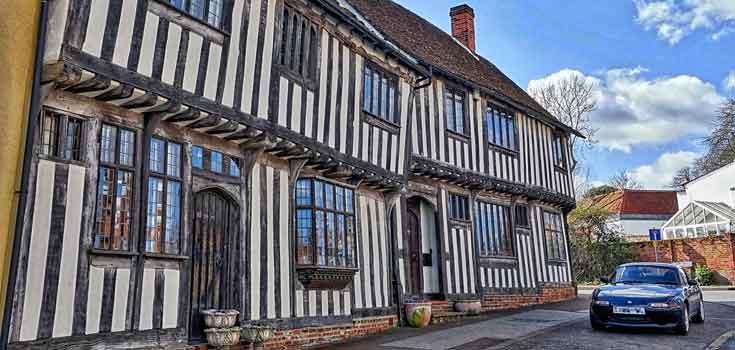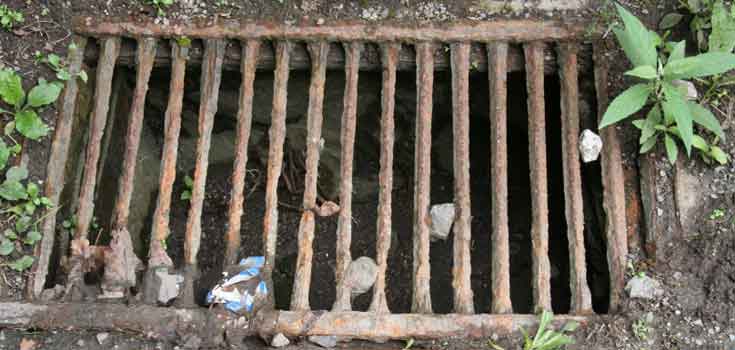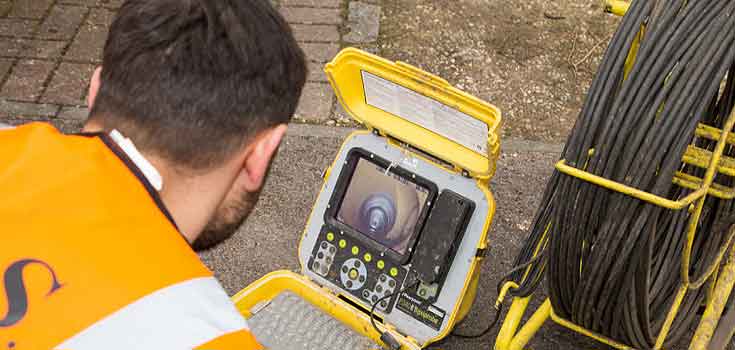Tackling Drain Issues in Listed Buildings

Dealing with drainage issues on any type of premises can be a hugely stressful event, but if you are dealing with a listed building, you may find yourself very restricted in what you can and can’t do with regards to the draining on your property.
A CCTV drain survey provides the answer to a lot of the issues you may face when dealing with drain issues on a listed premises, and to help you get to grips with the various nuances around maintenance and repairs to your listed property, we’ve put together this guide with all the information you’ll need.
What is a listed building?

A listed building is one that has special architectural or historic interest and can be anything from a castle to cathedral, a house to a drinking fountain. There are three levels of listed buildings, and the higher the level of your property, the more restricted you will be in what works you can carry out.
- Grade II – the lowest level, these buildings are considered to hold special interest and every effort should be made to preserve them. 92% of listed buildings are Grade II.
- Grade II* – Particularly important buildings that hold more than a special interest.
- Grade I – These buildings are considered to be of exceptional interest, and make up just 2% of all listed buildings.
What restrictions are there on listed buildings?
There are restrictions on any decorations, repairs, replacements or additions you would like to make to a listed building. It is a common misconception that the listing only applies to the exterior of the property, however this is not the case. The protection of a listed building extends to everything both inside and outside that is attached to the building, including fireplaces, doors, floors, boundary walls, outbuildings and garden features.
Basically, if any alterations you plan on making may compromise the character of the building or the historic value, then you will need planning permission – this includes the removal of historic materials to be replaced with modern materials.
How does this affect the drains on my property?

Generally speaking, if your drainage was to require emergency care – if, for example, your pipe burst – you would have no issues in calling in a professional service to repair the damage. If, however, you wanted to replace your drainage system with a whole new setup then you would be required to put in for planning permission and gain approval prior to any work beginning. This can take upwards of six weeks, so you should do this as soon as possible to avoid a lengthy wait.
The features of your garden may impact whether or not you can make changes to your drainage system on a listed property. For example, you may not be able to dig up your garden if you have water features or drains that are deemed to be of great importance to the character of the property.
You may also face some hold-ups with your request to replace your drain system if your drains are constructed from certain materials – cast iron, for example – and you may be limited by what materials you can use to replace the drains. Furthermore, if your drain system is of unique format, then the council may deem it to be crucial to the character of the property.
How can a CCTV drain survey help me with the drainage on my listed building?

CCTV drain surveys are a non-invasive method of checking the condition and layout of your drains. They can help you evaluate what work needs to be carried out to your drains without the need for excavation work. Because of this, you can carry out a CCTV drain survey without the need to get permission first, making it a quick and effective method of drain maintenance. CCTV drain surveys can assist with potential drainage issues on listed properties by:
- Locating blockages or developing blockages; these blockages can then be removed with a combination of drain surveying and drain rodding.
- Identifying weak patches of pipe; this allows you to determine whether or not that section of pipe will need replaced to prevent a leak developing. A section of pipe can be replaced using drain CCTVs and an expandable section of pipe, removing the need for excavation work.
- Checking for loose joints; these can then be tightened to make the piping more robust.
- Identifying tree root ingress; if you do have trees on your property the roots can grow down and through drains, especially older drains, which can cause cracks and leaks.
- Checking whether the pipes need replacing; a drain survey can be used to look at the overall condition of the pipes. If there are a few damaged sections of pipes that a patch job won’t be able to fix adequately, a CCTV drain survey can show an entire drain replacement to be necessary.
- Identifying drain misconnections; if your drain system was installed prior to 1920, it is likely that you may have a drain misconnection that is mixing wastewater with storm water. This is a huge problem as it causes contamination, therefore it must be rectified.
- Identify a rodent infestation; rodents can use your pipes to gain access to your property and nest inside the drains. A survey can help locate and eradicate the pest problem, protecting the listed building from becoming infested.
- Providing proof to Local Authorities; a drain survey can be recorded onto DVD and given to your council to support your application when looking to replace your drains.
At the end of the day, Local Authorities in charge of listed buildings are ultimately trying to preserve the structure as much as possible, so if a CCTV drain survey provides indisputable evidence that your drains are too damaged to support wastewater and could leak and cause more damage to the premises, they are much more likely to approve applications to replace the drain system.
Express Drainage Surveys can offer you a convenient and reliable drain survey at a time that suits you. We have a range of high-tech flexible and thin cameras that are capable of providing a clear image of the interior of your drains, no matter how thin or blocked up the drain may be. We pride ourselves on our exceptional customer service, free estimates and no hidden charges. For more information on how we can help you tackle your draining issue with our high quality CCTV drain surveys, contact us today and we’ll be happy to help.
